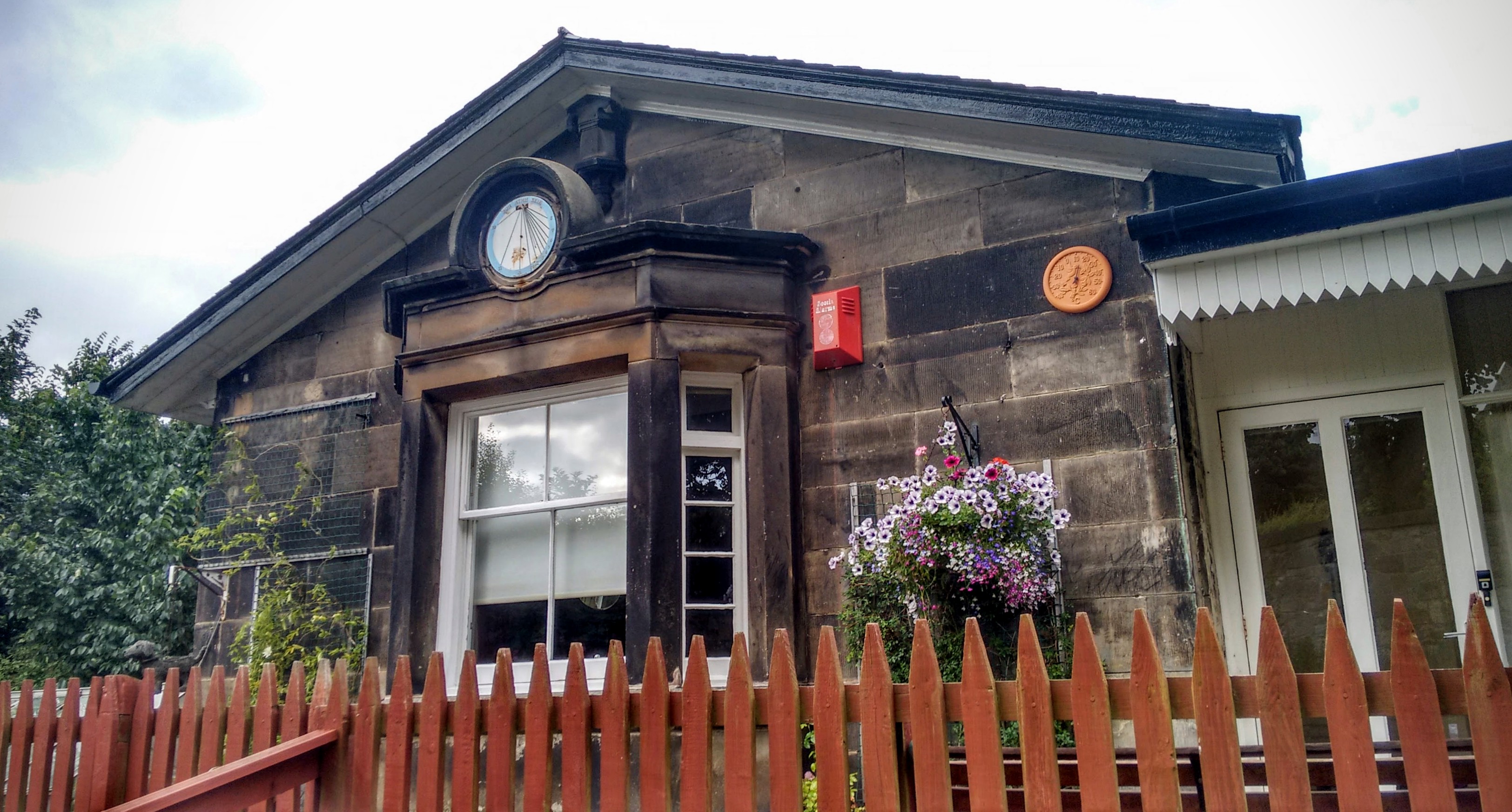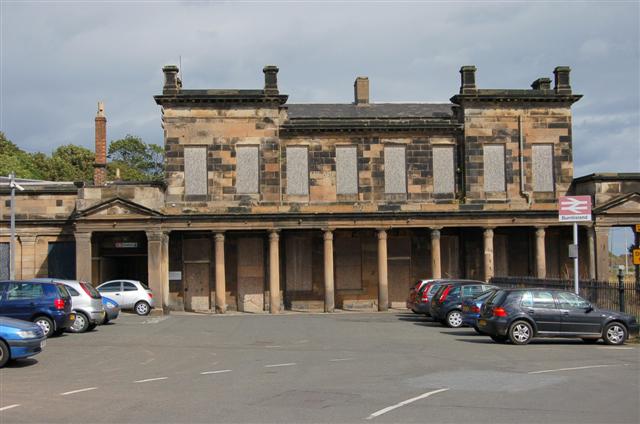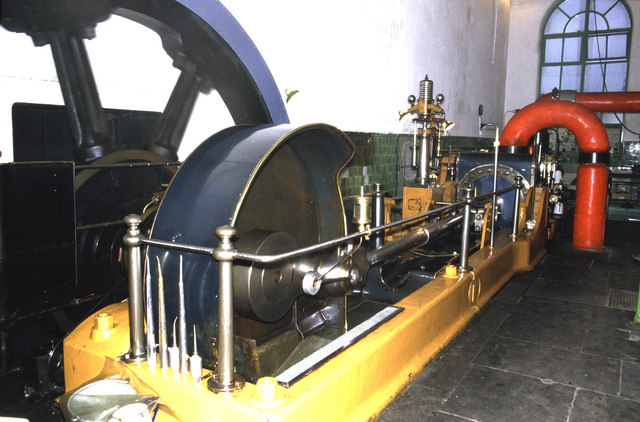|
Train Ferries
A train ferry is a ship (ferry) designed to carry railway vehicles. Typically, one level of the ship is fitted with railway tracks, and the vessel has a door at the front and/or rear to give access to the wharves. In the United States, train ferries are sometimes referred to as "car ferries", as distinguished from "auto ferries" used to transport automobiles. The wharf (sometimes called a " slip") has a ramp, and a linkspan or "apron", balanced by weights, that connects the railway proper to the ship, allowing for tidal or seasonal changes in water level. While railway vehicles can be and are shipped on the decks or in the holds of ordinary ships, purpose-built train ferries can be quickly loaded and unloaded by roll-on/roll-off, especially as several vehicles can be loaded or unloaded at once. A train ferry that is a barge is called a car float or rail barge. History An early train ferry was established as early as 1833 by the Monkland and Kirkintilloch Railway. To extend t ... [...More Info...] [...Related Items...] OR: [Wikipedia] [Google] [Baidu] |
Ship
A ship is a large watercraft that travels the world's oceans and other sufficiently deep waterways, carrying cargo or passengers, or in support of specialized missions, such as defense, research, and fishing. Ships are generally distinguished from boats, based on size, shape, load capacity, and purpose. Ships have supported exploration, trade, warfare, migration, colonization, and science. After the 15th century, new crops that had come from and to the Americas via the European seafarers significantly contributed to world population growth. Ship transport is responsible for the largest portion of world commerce. The word ''ship'' has meant, depending on the era and the context, either just a large vessel or specifically a ship-rigged sailing ship with three or more masts, each of which is square-rigged. As of 2016, there were more than 49,000 merchant ships, totaling almost 1.8 billion dead weight tons. Of these 28% were oil tankers, 43% were bulk carriers, and ... [...More Info...] [...Related Items...] OR: [Wikipedia] [Google] [Baidu] |
Leviathan (1849)
The Edinburgh, Leith and Newhaven Railway was a railway company formed in 1836 to connect the city of Edinburgh with the harbours on the Firth of Forth. When the line connected to Granton, the company name was changed to the Edinburgh, Leith and Granton Railway. It opened part of its route in 1846, but reaching the centre of Edinburgh involved the difficult construction of a long tunnel; this was opened in 1847. It was on a steep incline and was worked by rope haulage. The rope-worked tunnel proved a major handicap, and after the company had been taken over by the North British Railway, a longer but more convenient route was built round the eastern edge of the city at Abbeyhill. It opened in 1868. By the end of the nineteenth century the Leith station was unsuitable for the developing suburban passenger traffic, and a new branch to Leith Central station was built, opening in 1903. All of the original route has been dismantled, except part of the line from Piershill to a waste c ... [...More Info...] [...Related Items...] OR: [Wikipedia] [Google] [Baidu] |
Thomas Grainger
Thomas Grainger FRSE (12 November 1794 – 25 July 1852) was a Scottish civil engineer and surveyor. He was joint partner with John Miller in the prominent engineering firm of Grainger & Miller. Life Grainger was born at Gogar Green near Ratho, outside Edinburgh to Helen Marshall and Hugh Grainger. Educated at the University of Edinburgh, at 16 he got a job with John Leslie, a land surveyor. He started his own practice in 1816, and in 1825 he formed a partnership with John Miller which lasted until 1847. Their firm operated from the ground floor of Grainger's house at 56 George Street, in the centre of Edinburgh's New Town. Between 1845 and 1849 his company worked on the digging of the Bramhope Tunnel and building the Arthington Viaduct as part of laying the Leeds to Stockton-on-Tees line. The first modern rail ferry, the ''Leviathan'', was designed in 1849 by Grainger for the Edinburgh, Perth and Dundee Railway to cross the Firth of Forth between Granton and Burntisla ... [...More Info...] [...Related Items...] OR: [Wikipedia] [Google] [Baidu] |
Granton, Edinburgh
Granton is a district in the north of Edinburgh, Scotland. Granton forms part of Edinburgh's waterfront along the Firth of Forth and is, historically, an industrial area having a large harbour. Granton is part of Edinburgh's large scale waterfront regeneration programme. Name Granton first appears on maps in the seventeenth century relating to the now-demolished Granton Castle. The name also appears in Granton Burn, which now runs through Caroline Park down to what was Granton Beach. The name is presumed to come from Grant's Town or Grant's Dun (hill). Granton Castle Granton Castle is first documented in 1479, as a building owned by John Melville of Carnbee, Fife. It stood to the north-west of the current mansion, Caroline Park. On John's death it passed to his son, also John Melville, who was one of the many Scottish nobility killed at the Battle of Flodden. In 1592 it was sold by the Melville family to John Russell but by 1619 was acquired by Sir Thomas Hope, the Lord ... [...More Info...] [...Related Items...] OR: [Wikipedia] [Google] [Baidu] |
George Parker Bidder
George Parker Bidder (13 June 1806 – 20 September 1878) was an English engineer and calculating prodigy.W. W. Rouse Ball (1960) ''Calculating Prodigies'', in Mathematical Recreations and Essays, Macmillan, New York, chapter 13. Early life Born in the town of Moretonhampstead, Devon, England, he displayed a natural skill at calculation from an early age. In childhood, his father, William Bidder, a stonemason, exhibited him as a "calculating boy", first in local fairs up to the age of six, and later around the country. In this way his talent was turned to profitable account, but his general education was in danger of being completely neglected. Still, many of those who saw him developed an interest in his education, a notable example being Sir John Herschel. His interest led him to arrange it so George could be sent to school in Camberwell. There he did not remain long, being removed by his father, who wished to exhibit him again, but he was saved from this misfortune and e ... [...More Info...] [...Related Items...] OR: [Wikipedia] [Google] [Baidu] |
Institution Of Civil Engineers
The Institution of Civil Engineers (ICE) is an independent professional association for civil engineers and a charitable body in the United Kingdom. Based in London, ICE has over 92,000 members, of whom three-quarters are located in the UK, while the rest are located in more than 150 other countries. The ICE aims to support the civil engineering profession by offering professional qualification, promoting education, maintaining professional ethics, and liaising with industry, academia and government. Under its commercial arm, it delivers training, recruitment, publishing and contract services. As a professional body, ICE aims to support and promote professional learning (both to students and existing practitioners), managing professional ethics and safeguarding the status of engineers, and representing the interests of the profession in dealings with government, etc. It sets standards for membership of the body; works with industry and academia to progress engineering standards a ... [...More Info...] [...Related Items...] OR: [Wikipedia] [Google] [Baidu] |
Stationary Steam Engine
Stationary steam engines are fixed steam engines used for pumping or driving mills and factories, and for power generation. They are distinct from Steam locomotive, locomotive engines used on Rail transport, railways, traction engines for heavy steam haulage on roads, steam cars (and other motor vehicles), agricultural engines used for ploughing or threshing, marine steam engine, marine engines, and the steam turbines used as the mechanism of power generation for most nuclear reactor#Electrical power generation, nuclear power plants. They were introduced during the 18th century and widely made for the whole of the 19th century and most of the first half of the 20th century, only declining as electricity supply and the internal combustion engine became more widespread. Types of stationary steam engine There are different patterns of stationary steam engines, distinguished by the layout of the Cylinder (engine), cylinders and crankshaft: *Beam engines have a rocking Beam (struct ... [...More Info...] [...Related Items...] OR: [Wikipedia] [Google] [Baidu] |
Tide
Tides are the rise and fall of sea levels caused by the combined effects of the gravitational forces exerted by the Moon (and to a much lesser extent, the Sun) and are also caused by the Earth and Moon orbiting one another. Tide tables can be used for any given locale to find the predicted times and amplitude (or " tidal range"). The predictions are influenced by many factors including the alignment of the Sun and Moon, the phase and amplitude of the tide (pattern of tides in the deep ocean), the amphidromic systems of the oceans, and the shape of the coastline and near-shore bathymetry (see '' Timing''). They are however only predictions, the actual time and height of the tide is affected by wind and atmospheric pressure. Many shorelines experience semi-diurnal tides—two nearly equal high and low tides each day. Other locations have a diurnal tide—one high and low tide each day. A "mixed tide"—two uneven magnitude tides a day—is a third regular category. Tid ... [...More Info...] [...Related Items...] OR: [Wikipedia] [Google] [Baidu] |
Roll-on Roll-off
Roll-on/roll-off (RORO or ro-ro) ships are cargo ships designed to carry wheeled cargo, such as cars, motorcycles, trucks, semi-trailer trucks, buses, trailers, and railroad cars, that are driven on and off the ship on their own wheels or using a platform vehicle, such as a self-propelled modular transporter. This is in contrast to lift-on/lift-off (LoLo) vessels, which use a crane to load and unload cargo. RORO vessels have either built-in or shore-based ramps or ferry slips that allow the cargo to be efficiently rolled on and off the vessel when in port. While smaller ferries that operate across rivers and other short distances often have built-in ramps, the term RORO is generally reserved for large oceangoing vessels. The ramps and doors may be located in the stern, bow, or sides, or any combination thereof. Description Types of RORO vessels include ferries, cruiseferries, cargo ships, barges, and RoRo service for air deliveries. New automobiles that are transported b ... [...More Info...] [...Related Items...] OR: [Wikipedia] [Google] [Baidu] |
Thomas Bouch
Sir Thomas Bouch (; 25 February 1822 – 30 October 1880) was a British railway engineer. He was born in Thursby, near Carlisle, Cumberland, and lived in Edinburgh. As manager of the Edinburgh and Northern Railway he introduced the first roll-on/roll-off train ferry service in the world. Subsequently as a consulting engineer, he helped develop the caisson and popularised the use of lattice girders in railway bridges. He was knighted after the successful completion of the first Tay Railway Bridge, but his reputation was destroyed by the subsequent Tay Bridge disaster, in which 75 people are believed to have died as a result of defects in design, construction and maintenance, for all of which Bouch was held responsible. He died within 18 months of being knighted. Early career Bouch's father (a retired sea-captain) kept the Ship Inn at Thursby and Thomas was educated locally (Thursby and then Carlisle) before at the age of 17 beginning his civil engineering career as assist ... [...More Info...] [...Related Items...] OR: [Wikipedia] [Google] [Baidu] |
Firth Of Forth
The Firth of Forth () is the estuary, or firth, of several Scottish rivers including the River Forth. It meets the North Sea with Fife on the north coast and Lothian on the south. Name ''Firth'' is a cognate of ''fjord'', a Norse word meaning a narrow inlet. ''Forth'' stems from the name of the river; this is ''*Vo-rit-ia'' (slow running) in Proto-Celtic, yielding '' Foirthe'' in Old Gaelic and '' Gweryd'' in Welsh. It was known as ''Bodotria'' in Roman times. In the Norse sagas it was known as the ''Myrkvifiörd''. An early Welsh name is ''Merin Iodeo'', or the "Sea of Iudeu". Geography and economy Geologically, the Firth of Forth is a fjord, formed by the Forth Glacier in the last glacial period. The drainage basin for the Firth of Forth covers a wide geographic area including places as far from the shore as Ben Lomond, Cumbernauld, Harthill, Penicuik and the edges of Gleneagles Golf Course. Many towns line the shores, as well as the petrochemical complexes at ... [...More Info...] [...Related Items...] OR: [Wikipedia] [Google] [Baidu] |
Aberdeen
Aberdeen (; sco, Aiberdeen ; gd, Obar Dheathain ; la, Aberdonia) is a city in North East Scotland, and is the third most populous city in the country. Aberdeen is one of Scotland's 32 local government council areas (as Aberdeen City), and has a population estimate of for the city of Aberdeen, and for the local council area making it the United Kingdom's 39th most populous built-up area. The city is northeast of Edinburgh and north of London, and is the northernmost major city in the United Kingdom. Aberdeen has a long, sandy coastline and features an oceanic climate, with cool summers and mild, rainy winters. During the mid-18th to mid-20th centuries, Aberdeen's buildings incorporated locally quarried grey granite, which may sparkle like silver because of its high mica content. Since the discovery of North Sea oil in 1969, Aberdeen has been known as the offshore oil capital of Europe. Based upon the discovery of prehistoric villages around the mouths of the river ... [...More Info...] [...Related Items...] OR: [Wikipedia] [Google] [Baidu] |






.jpg)
